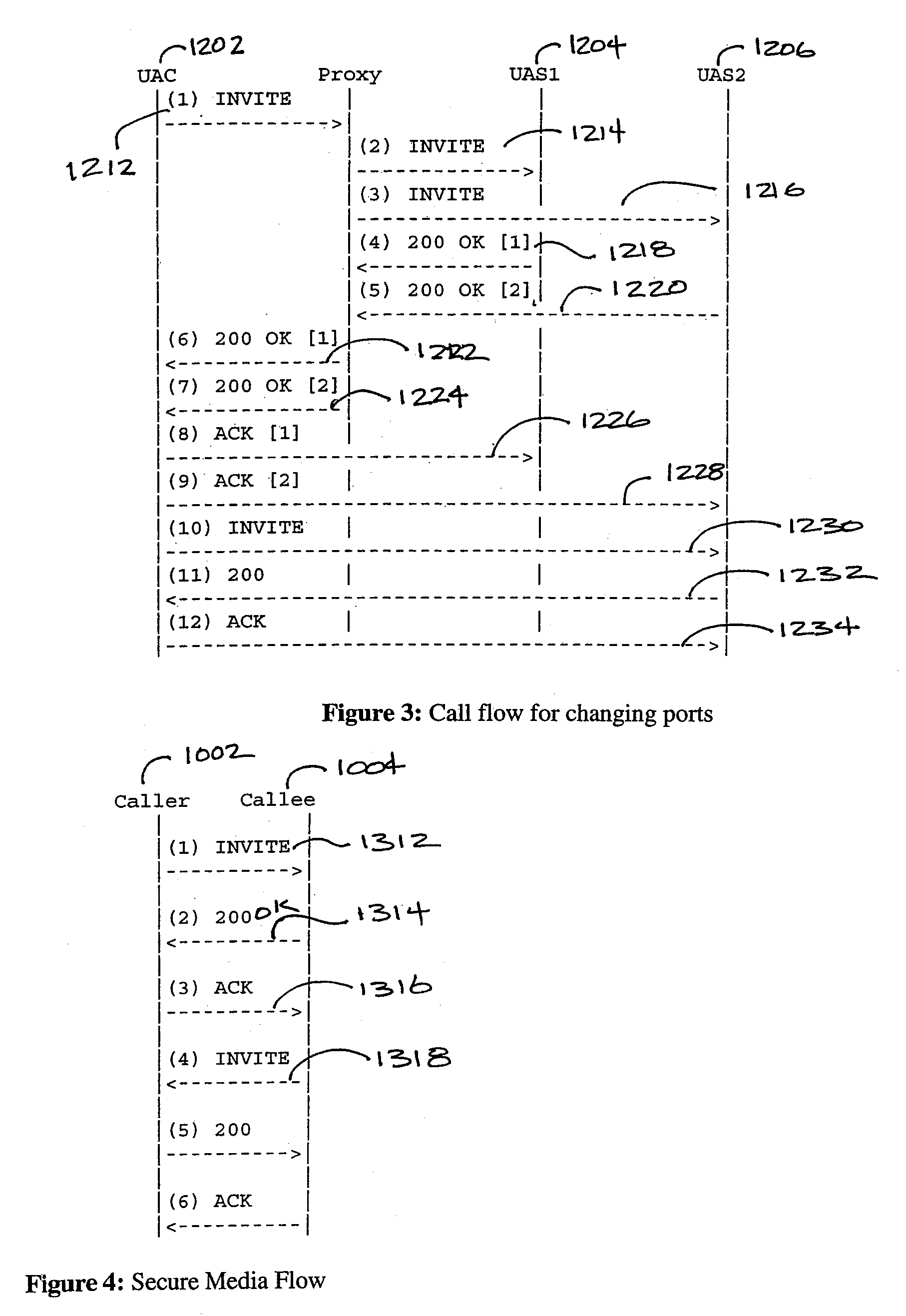Establishing and Modifying Network Signaling Protocols
a network signaling and protocol technology, applied in the field of interactive communications over packet networks, can solve the problems of inability to handle “early media” in the early implementation of sip, failure to always ring all phones, and inability to provide functions in a less-than-ideal manner
- Summary
- Abstract
- Description
- Claims
- Application Information
AI Technical Summary
Benefits of technology
Problems solved by technology
Method used
Image
Examples
Embodiment Construction
IP-in-IP NAT
[0174]Referring to FIG. 17, caller UA12602 is on the public Internet. Caller UA12602 wishes to call a user, UA22604, sip:user2@foo.com. The foo.com domain is running on a net-10 network. The network has a single multi-homed proxy server 2612, and it has a multi-homed router 2618 for media processing. The router has a public interface of 1.2.3.4.
[0175]FIG. 18 shows the flow for the call. Caller 1002 sends an INVITE 2712. This INVITE looks like, in part:
INVITE sip:user2@foo.com SIP / 2.0Supported: middleboxMedia-Stream: audio;address=9.8.7.6;port=1288;id=fxx9;transport=udpContent-Type: application / sdpContent-Length: ...v=0o=alice 2890844526 2890844526 IN IP4 host.anywhere.coms=c=IN IP4 9.8.7.6t=0 0m=audio 1288 RTP / AVP 0
INVITE 2712 is passed to the foo.com proxy 2612. Proxy 2612 does not require the specific usage of an intermediary for media from callee 1004 (who is within foo.com) to caller 1002.
[0176]Therefore, it merely proxies the request after a registration lookup. Thi...
PUM
 Login to View More
Login to View More Abstract
Description
Claims
Application Information
 Login to View More
Login to View More - R&D
- Intellectual Property
- Life Sciences
- Materials
- Tech Scout
- Unparalleled Data Quality
- Higher Quality Content
- 60% Fewer Hallucinations
Browse by: Latest US Patents, China's latest patents, Technical Efficacy Thesaurus, Application Domain, Technology Topic, Popular Technical Reports.
© 2025 PatSnap. All rights reserved.Legal|Privacy policy|Modern Slavery Act Transparency Statement|Sitemap|About US| Contact US: help@patsnap.com



